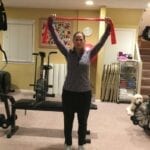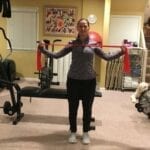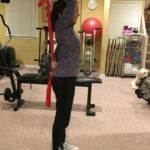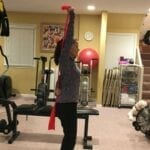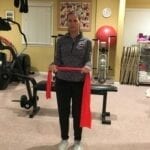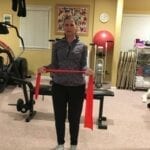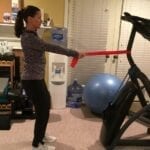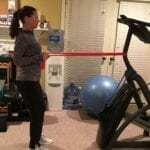Written by Jody Miller, M.A., RCEP
Co-Author Marsha Seidelman, M.D.
March 23, 2019
In addtion to building bone, these routines can help improve endurance, strength, posture and balance to help with decreasing the risk of falls and fractures.
The previous article and video demonstrated a series of body weight bearing exercises including push ups and planks. These exercises require no equipment, just some floor space and can be done anytime anywhere.
Push ups target the chest muscles (‘pecs’ or pectorals), shoulders (deltoids), back of the arms (triceps) and abdominals. The plank is an isometric exercise (static hold) that targets an array of muscles including the back (erector spinae and rhomboids), the abdominals (rectus abdominus and transverse abdominus), shoulders (deltoids and rotator cuff), chest (pectorals), buttocks muscles (glutes), and legs (quadriceps and gastrocnemius). Both push ups and planks stimulate the bones of the upper body, including wrists and shoulders.
Today’s video highlights upper body postural exercises using exercise bands or tubing. These exercises include lat pull down (targeting the ‘lats’ or latissimus dorsi), standing row (rhomboids), triceps overhead extension (triceps) and standing external rotation (rotator cuff). This is a wonderful series of exercises to strengthen the muscles of the upper back and shoulders helping to keep the spine straight and for preventing the chest to collapse forward resulting in kyphosis (excessive curvature of the upper spine).
Bands and tubing come in a variety of resistances denoted by colors. Please use a resistance that is challenging but manageable and that you are able to perform the full range of motion of each movement pattern. Start with a few and build up to one or two sets of 20-25 repetitions.
It is generally recommended to do bone stimulating exercise at least three times per week.
Keep in mind, if you have already been diagnosed with osteopenia or osteoporosis, we recommend that you check with your physician before attempting new challenges.

